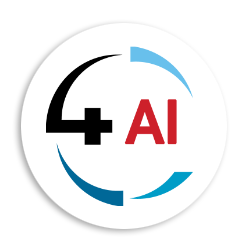Blog - Channel Partner
How Power BI Works with Microsoft Fabric: A Unified Analytics Experience

The evolution of data analytics has brought about powerful tools to aid businesses in making data-driven decisions. Microsoft Fabric is the latest addition to Microsoft's ecosystem, designed to be an all-encompassing platform that seamlessly integrates various data analytics tools. One of the most critical components of Microsoft Fabric is Power BI, Microsoft’s leading business intelligence solution. In this blog, we'll explore how Power BI functions within Microsoft Fabric, the benefits of this integration, and the available licensing options for those interested in leveraging the power of unified analytics.
What is Microsoft Fabric?
Microsoft Fabric is a comprehensive analytics platform that combines the power of Azure Data Factory, Azure Synapse, Power BI, and OneLake under one umbrella. This integration aims to provide an end-to-end solution for all data-related processes— from data ingestion, transformation, and storage, to advanced analytics and visualization. In essence, Microsoft Fabric is a data engineer's dream come true, offering everything needed for seamless data analytics in one centralized interface.
Role of Power BI in Microsoft Fabric
Power BI, a well-established tool for data visualization and reporting, has been seamlessly integrated into the Microsoft Fabric environment. Here's a breakdown of how Power BI functions within Microsoft Fabric:
1. Data Access and Integration
Power BI acts as the primary visualization layer within Microsoft Fabric. Users can tap into the vast resources of OneLake, which serves as a central data lake for all data storage needs. Through Power BI, analysts can access and connect to various data sources stored within OneLake, including Azure Synapse data warehouses, third-party cloud services, on-premises databases, and more.
- Direct Data Access: Power BI allows direct queries to OneLake, eliminating the need to move data across different platforms.
- Data Models: Power BI can work with the shared data models defined within Microsoft Fabric, ensuring consistent data usage across the organization.
- Data Transformation: Integrated with Data Factory, Power BI can perform lightweight data transformation using Power Query, allowing quick data cleaning and processing before visualization.
2. Collaboration and Shared Insights
Within Microsoft Fabric, Power BI is not just a visualization tool; it is a collaborative environment where multiple users can access, edit, and share reports and dashboards. Features like data lineage, shared datasets, and version control ensure that teams can work together seamlessly without conflicting changes.
- Shared Workspaces: Workspaces within Power BI allow team members to collaborate on dashboards, share insights, and maintain consistent reporting standards.
- Data Security: Integration with Azure Active Directory (AAD) enables role-based access control, allowing organizations to manage permissions and maintain data security across the board.
3. AI and Machine Learning Integration
Microsoft Fabric's advanced analytics capabilities are directly accessible through Power BI, enhancing the tool's analytical power. Users can integrate machine learning models built within Azure Synapse into Power BI reports, offering predictive analytics and advanced insights.
- AI Visualizations: Power BI includes built-in AI visuals that utilize machine learning models, such as sentiment analysis and forecasting.
- Seamless ML Integration: Machine learning models developed in Synapse can be embedded directly into Power BI reports, allowing users to visualize ML outputs and gain insights without leaving the Power BI environment.
4. Data Governance and Compliance
Power BI within Microsoft Fabric benefits from centralized data governance through tools like Microsoft Purview, ensuring compliance with industry regulations. Data lineage, metadata management, and auditing features are built into the platform, helping organizations track data usage and maintain quality standards.
Licensing Options for Power BI and Microsoft Fabric
Licensing for Power BI and Microsoft Fabric can be complex, as it varies based on usage requirements, organizational needs, and budget constraints. Here’s a breakdown of the primary licensing structures:
1. Power BI Licensing Options
Power BI licensing is divided into several categories, each catering to different levels of usage and functionality:
- Power BI Free: This is the entry-level option, primarily suited for individual users who want to create reports and dashboards using their own data. However, sharing capabilities are limited, making it less suitable for team environments.
- Power BI Pro: Aimed at business users who require more advanced features, Power BI Pro provides full access to Power BI’s functionalities, including sharing and collaboration
capabilities. This license is typically charged per user, per month. Users can create, publish, and share dashboards with colleagues, enabling team collaboration.
- Power BI Premium (Per User): This plan is designed for users who need advanced capabilities like AI, paginated reports, and larger data storage limits. It’s an upgrade from Pro, allowing individual users to access premium features without a full capacity commitment.
- Power BI Premium (Capacity): This is a capacity-based license, ideal for larger organizations. Instead of charging per user, Power BI Premium (Capacity) offers dedicated resources that teams or departments can share. This option provides the most advanced features, including deployment pipelines, larger datasets, and advanced AI capabilities.
As the licensing options for Power BI are undergoing changes, please refer to the latest Microsoft published pricing structure for Power BI for further information and guidance.
2. Microsoft Fabric Licensing Options
Microsoft Fabric offers a unified approach to data analytics, and its licensing reflects that flexibility:
- Pay-As-You-Go: Users can opt for a consumption-based model, paying only for the resources they use, such as data storage, processing, and analytics workloads. This model is ideal for organizations with fluctuating needs or small businesses looking to minimize upfront costs.
- Capacity-Based Licensing: This model offers a fixed amount of resources and is best suited for enterprises requiring predictable costs. Capacity-based licenses provide reserved resources for computing, storage, and analytics, allowing organizations to maintain performance even under heavy workloads.
- Bundling with Power BI Premium: Organizations using Power BI Premium (Capacity) can benefit from bundling it with Microsoft Fabric, allowing them to leverage the integrated environment at a reduced cost. This includes access to tools like Synapse, Data Factory, and OneLake, combined with the advanced reporting features of Power BI.
Comparing Licensing Costs and Benefits
When choosing between licensing models, consider factors like:
- Scale: Are you a small business or a large enterprise?
- Frequency of Usage: How often do you run analytics workloads?
- Collaboration Needs: Do you need extensive sharing and governance capabilities?
- Data Volume: How much data will you manage and analyze?
A Power BI Pro license may be sufficient for small teams needing basic reporting capabilities. In contrast, a larger organization requiring advanced analytics, machine learning integration, and high-volume data handling might opt for a Power BI Premium (Capacity) plan bundled with Microsoft Fabric.
A Unified Analytics Future
The integration of Power BI within Microsoft Fabric represents a significant step forward in data analytics. By combining multiple analytics and data management tools under a single, cohesive platform, Microsoft has created an environment that streamlines data-driven decision-making, enhances collaboration, and reduces the complexities of data management. For organizations of all sizes, Microsoft Fabric and Power BI offer a scalable solution, with flexible licensing options that cater to diverse needs.
Whether you're a data analyst, a business intelligence professional, or a decision-maker, the unified platform offered by Microsoft Fabric can provide valuable insights, improve efficiency, and drive better business outcomes—all while keeping costs under control with flexible licensing structures. Reach out to your SureStep Ambassador today, at This email address is being protected from spambots. You need JavaScript enabled to view it., to discuss your or your customer’s data and visualization needs.


